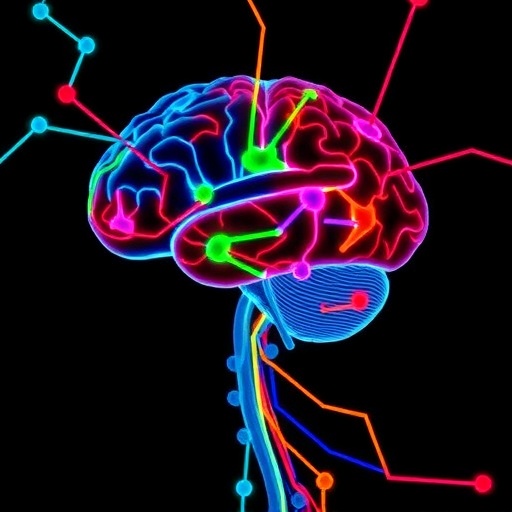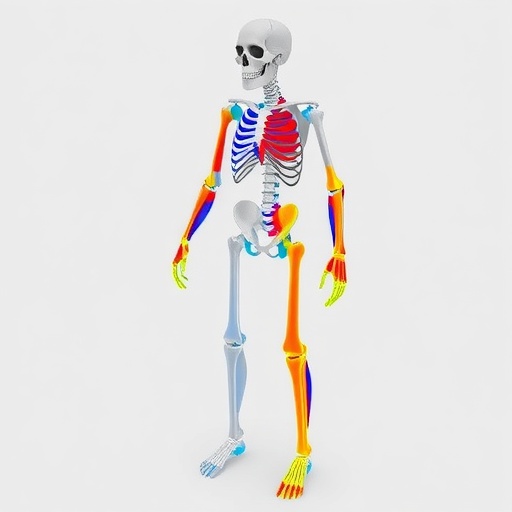In recent years, the landscape of neuroimaging research has undergone significant transformation as scientists increasingly recognize the complexity and diversity inherent in human behavior. Traditional approaches often treated study populations as relatively homogeneous groups, minimizing the nuances brought about by sociodemographic factors such as race, gender, socioeconomic status, and cultural background. However, a growing body of evidence emphasizes that these intersecting social identities do not merely coexist but interact dynamically, shaping individual behavioral expressions and brain biology in profound ways. This paradigm shift is paramount in the context of mental health, where heterogeneity in symptom presentation and treatment response is substantial and often underexplored through the lens of intersectionality.
A groundbreaking study authored by Dhamala, Ricard, Uddin, and colleagues, recently published in Nature Neuroscience, critically addresses this urgent need. Their research underscores the importance of integrating diverse intersectional identities into neuroimaging investigations to achieve a more comprehensive understanding of psychiatric conditions. The authors contend that behavioral variability cannot be fully understood without appreciating the intertwined effects of multiple sociodemographic variables and their interplay with life experiences. Such integration holds promise not only for advancing scientific inquiry but also for enhancing clinical interventions tailored to individual identities.
At the core of the study is the recognition that complex human behaviors—spanning cognitive functions, personality traits, and mental health outcomes—exhibit considerable heterogeneity. This variability is often rooted in biological, environmental, and social determinants that act in concert. Neuroimaging provides a powerful tool to map brain circuits and networks underlying these behaviors, yet its potential has been limited historically by insufficient representation and analytical strategies that overlook the rich tapestry of human diversity. The authors challenge the field to move beyond simplistic categorizations and linear models toward frameworks that accommodate multilayered social identities intersecting with neurobiological processes.
One compelling aspect of their argument centers on how sociodemographic factors influence the prevalence, expression, and trajectory of psychiatric disorders. For instance, the rates of depression, anxiety, or psychotic disorders vary not only by individual factors such as sex or ethnicity but also by their intersection—how gender interacts with race or socioeconomic status may shape risk profiles and symptom manifestations. These intersectional effects extend to help-seeking behaviors, where cultural norms and stigma differentially affect whether and how individuals access mental health services. By incorporating these complexities into neuroimaging research, scientists can unravel biological correlates that are sensitive to social context, thereby refining diagnostic and therapeutic tools.
Treatment responses and tolerability also differ markedly across sociocultural lines, adding another layer of complexity to mental health research. Pharmacological and psychotherapeutic interventions, while beneficial on average, may yield variable efficacy and side effect profiles when examined through an intersectional lens. This variability underpins the necessity for neuroimaging studies that do not merely catalog brain differences but discern how these differences modulate treatment outcomes. Understanding the brain mechanisms underlying diverse responses can pave the way for personalized medicine approaches that accommodate social identities and lived experiences.
Moving beyond clinical outcomes, the authors highlight how intersectionality might shape fundamental brain biology. Life experiences tied to social positioning—such as exposure to chronic stress, discrimination, or socioeconomic adversity—can impact neurodevelopmental trajectories and brain plasticity. Neuroimaging offers a window into these processes by revealing structural and functional alterations corresponding to environmental exposures. Integrating intersectional frameworks helps researchers discern patterns otherwise obscured within aggregated data, illuminating the neurobiological embedding of social determinants of health.
Confronting these complexities necessitates methodological innovations in participant recruitment, data acquisition, and analysis. Traditional recruitment strategies have often resulted in skewed samples that fail to represent population diversity adequately. The authors advocate for targeted recruitment efforts designed to capture a broad range of sociodemographic profiles and intersectional identities. This strategy ensures sufficient statistical power to detect nuanced interactions and prevents marginalization of underrepresented groups within neuroscientific inquiry.
In terms of data acquisition, the authors suggest incorporating sociodemographic data collection systematically and rigorously. Variables including but not limited to race, ethnicity, gender identity, sexual orientation, socioeconomic indicators, and cultural affiliations must be captured to enable intersectional analyses. Moreover, researchers should consider contextual factors such as neighborhood characteristics, educational opportunities, and experiences of discrimination or trauma. These multifaceted data points will enrich the interpretability of neuroimaging findings and link brain measures to real-world social phenomena.
Analytic approaches require parallel sophistication to handle the high dimensionality and complexity of intersectional data. Multilevel models, machine learning algorithms, and other advanced computational tools can tease apart interactions among sociodemographic variables and their relationship to brain metrics. Importantly, researchers must ensure transparency and replicability by openly sharing datasets and analysis pipelines. Incorporating intersectionality into neuroimaging thus aligns with broader movements toward open science and reproducibility.
The implications of this research extend to policy and clinical practice. By revealing how intersectional identities influence brain-behavior relationships and mental health outcomes, neuroimaging research can inform culturally sensitive diagnostics and interventions. Mental health services tailored to recognize and address the unique needs of diverse populations stand to improve therapeutic efficacy and equity. Furthermore, acknowledging intersectionality counters the perpetuation of biases and health disparities that have historically limited access and outcomes for marginalized communities.
Ethical considerations also come to the fore in this avenue of research. Respectful engagement with participants from diverse backgrounds requires cultural competence and sensitivity, emphasizing informed consent processes that address concerns related to stigma, privacy, and potential misuse of data. Collaborative partnerships with communities can foster trust and relevance, enhancing the translational impact of neuroimaging findings. The authors urge the neuroimaging field to integrate these ethical imperatives within study design and dissemination.
Beyond immediate research benefits, the adoption of intersectionality in neuroimaging opens new scientific questions about human brain function and dysfunction. It challenges reductionist models and encourages holistic perspectives that integrate biology with lived experience. This comprehensive approach aligns with emerging frameworks in neuroscience that emphasize network dynamics, plasticity, and environment-brain interplay. It calls for interdisciplinary collaboration, bridging social sciences, clinical disciplines, and computational neuroscience.
As this field advances, training scientists and clinicians to appreciate and implement intersectional perspectives becomes crucial. Educational programs must embed principles of social justice, cultural humility, and methodological rigor in their curricula. By fostering a new generation of researchers skilled in these competencies, the neuroimaging community can drive innovation and social impact, ensuring that research translates into benefits for all sectors of society.
The path forward also demands sustained funding and institutional support for studies centered on diversity and inclusion. Historically, research focused on underrepresented populations has faced funding challenges, limiting progress. Recognizing the scientific value and societal urgency of intersectionality-informed neuroimaging can guide allocation of resources and incentivize collaborative consortia. Such investment will accelerate discovery and implementation of equitable mental health solutions.
In summation, the work by Dhamala and colleagues represents a critical milestone in neuroimaging research, advocating for a paradigm that acknowledges and rigorously investigates the interconnected nature of social identities. By integrating intersectional realities into study designs, data analysis, and interpretation, this approach promises to deepen our understanding of the human brain and its vulnerabilities, particularly in mental health contexts. It is a clarion call to transform neuroscience into a more inclusive, precise, and socially aware discipline.
The potential of intersectionality in neuroimaging transcends academic discourse, bearing tangible consequences for individuals and communities grappling with psychiatric illnesses worldwide. Embracing complexity, diversity, and context will not only enrich scientific knowledge but also empower personalized care, reduce disparities, and ultimately improve quality of life. As research continues to evolve, the interconnectedness of social identities must stand as a foundational principle guiding the next era of neuroscience discovery.
Subject of Research: The integration of intersectional social identities in neuroimaging research to understand the variability in behavior and mental health disorders.
Article Title: Considering the interconnected nature of social identities in neuroimaging research.
Article References:
Dhamala, E., Ricard, J.A., Uddin, L.Q. et al. Considering the interconnected nature of social identities in neuroimaging research.
Nat Neurosci 28, 222–233 (2025). https://doi.org/10.1038/s41593-024-01832-y
Image Credits: AI Generated
DOI: https://doi.org/10.1038/s41593-024-01832-y
Tags: behavioral expressions and brain functiondiversity in behavioral studiesenhancing clinical interventions through diversityimpact of social identities on brain biologyintegrating cultural background in researchintersectionality in psychologymental health treatment variabilityneuroimaging researchsignificance of race and gender in neurosciencesociodemographic factors in mental healthtransformative approaches in neuroimagingunderstanding psychiatric conditions





